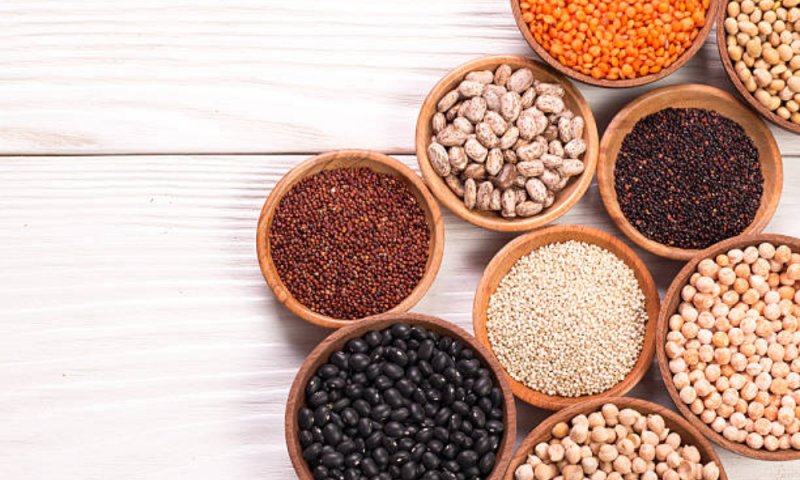Being an agricultural country, India has learned to derive all the necessary nutrition from crops and plants. Hence, pulses are a staple for most Indian households. You will find many regional dishes that include locally available pulses. The great Indian Dal is one of the best examples of how pulses are staples to the Indian diet. There’s not one regional meal we’ve heard of that does not include a variety of lentils – DAL. Furthermore, Indians take the tradition of eating dal and other pulses with them, no matter which part of the world they are in. Apart from being a part of our culinary traditions, pulses and legumes are included in the diet for various nutritional reasons. There are many different types of pulses you can choose to eat. However, below we have shared the benefits of five primary and readily available types of pulses and tips on how you can include them in your diet.
Dals / Lentils
Dals are not only irresistible but one of the most nutritious pulses you can devour. Furthermore, there’s a splendid variety to choose from, like red split lentils, split black gram, yellow lentils, split pigeon lentils, split Bengal gram lentils, and more.
Benefits of Dals / Lentils
- They are an excellent source of protein, dietary fiber, and vitamin B.
- They help improve digestion.
- Red split lentils are known to be a food to increase eyesight.
- They help maintain stable blood pressure.
- The Folate in lentils is known to protect the heart.
- Lentils are a nutritious food for weight loss.
Chickpeas
If you are a fitness enthusiast, you know that there’s nothing better than chickpeas protein to build muscle. Surprisingly, chickpeas aren’t just a staple in the Northern regions of India, but they have made a home in the Mediterranean cuisines as well. Besides being rich in protein food, we must say that chickpeas have won hearts with their flavor and texture.
Benefits of Chickpeas
- They are known to be the best protein food.
- They help manage weight.
- They help control blood sugar.
- They are known to lower cholesterol levels.
- They are suitable for bone health.
Rajma
How can we not mention Rajma when talking about pulses? Loved by Punjabis and Mexicans, all types of Rajma are worth devouring, not only for their silky texture but also for their innumerous health benefits.
Benefits of Rajma/Kidney Beans
- Kidney beans protein is known to expedite the muscle-building process.
- They help strengthen bones.
- They are excellent at stabilizing blood sugar levels.
- They facilitate smooth digestion and increase your metabolism.
- They help keep your heart healthy.
Kala Chana
Kala Chana, also known as black chickpeas, are distant cousins of chickpeas with similar benefits but a uniquely different flavor. They have a delicious nutty flavor and a starchy texture when cooked. They are primarily eaten in the Indian subcontinent, Iran, Mexico, and Ethiopia. They are packed with nutrients and are very beneficial for the body.
Benefits of Kala Chana
- It aids weight loss.
- They help build red blood cells.
- It supports bone health.
- It increases metabolism and improves digestion.
- It is packed with vitamin B6, which helps elevate brain functions.
Moong Beans
Moong beans, also known as green grams, are a light delight for health-conscious foodies. It oozes delicious flavor and has a smooth and silky texture when cooked. They are widely used in the Gujarati and Rajasthani cuisines.
Benefits of Moong Beans
- They are high in antioxidants which are great for cell regeneration.
- They help lower harmful cholesterol levels.
- They are rich in fiber and thus improve digestion.
- They promote weight loss.
- They are a great source of plant-based protein.
Black Eyed Beans {Chawli or Lobia}
These beans can be soaked and then cooked into delicious curries. These are our favorite beans for a weeknight curry. Soak them 5-6 hours before cooking or use your Instant Pot to cook them in under half an hour.
Yellow Pigeon Peas {Toor or Toovar Daal}
I am pretty sure these come as whole beans too but I only buy these split and skinned. In Maharashtra, where I grew up Toor Daal is used to make the everyday dal. My favorite version of this is the spinach dal, made with lots of garlic, spinach, and tomatoes! The South Indian Bisi Bele Bhath using Toor daal in Instant Pot comes out super authentic and tasty
